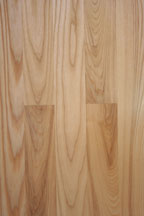
Description
The sapwood is light-colored to nearly white and the heartwood
varies from greyish or light brown, to pale yellow streaked with
brown. The wood is generally straight-grained with a coarse uniform
texture. The degree and availability of light-colored sapwood, and
other properties, will vary according to the growing regions.
Where it Grows
Throughout the Eastern U.S. White ash trees range in height from 80
to 120 feet with diameter from 2 to 5 feet.
Main Uses
Furniture, flooring, doors, architectural millwork and moulding,
kitchen cabinets, paneling, tool handles, baseball bats, hockey
sticks, billiard cues, skis, oars and turnings.
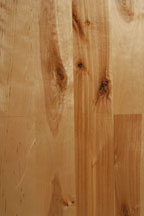
Description
White birch has a white sapwood and light reddish brown heartwood.
The wood is generally straight-grained with a fine uniform texture.
Generally characterized by a plain and often curly or wavy
pattern.
Where it Grows
Eastern U.S., principally Northern and Lake states. The average
tree is 60 to 70 feet in height. Birch prefers valleys and stream
banks although it adapts itself to higher grounds.
Main Uses
Furniture, millwork and paneling, doors, flooring, kitchen
cabinets, turnings and toys.
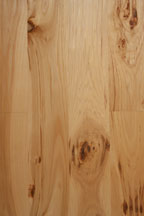
Description
The hickories are an important group within the Eastern hardwood
forests. Botanically they are split into two groups; the true
hickories, and the pecan hickories (fruit bearing). The wood is
virtually the same for both and is usually sold together. Hickory
is the hardest, heaviest and strongest American wood. The sapwood
of hickory is white, tinged with inconspicuous fine brown lines
while the heartwood is pale to reddish brown. Both are
coarse-textured and the grain is fine, usually straight but can be
wavy or irregular.
Where it Grows
Eastern U.S., principal commercial areas: Central and Southern
states. Tree height ranges from 60 to 120 feet. Hickories grow
slowly and it is not unusual for a tree to take 200 years to
mature.
Main Uses
Tool handles, furniture, cabinetry, flooring, paneling, wooden
ladders, dowels and sporting goods.
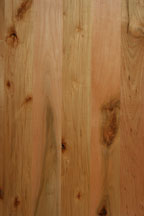
Description
In most respects red (soft) maple is very similar to hard maple.
Generally the sapwood is greyish white, sometimes with darker
colored pith flecks. The heartwood varies from light to dark
reddish brown. The wood is usually straight-grained. The lumber is
generally sold unselected for color.
Where it Grows
Throughout Eastern U.S., and to a lesser extent on the West Coast
(bigleaf maple). Average tree height is 60 to 80 feet.
Main Uses
Furniture, paneling and millwork, kitchen cabinets, mouldings,
doors, musical instruments, and turnings. Soft maple is often used
as a substitute for hard maple or stained to resemble other species
such as cherry. Its physical and working properties also make it a
possible substitute for beech.
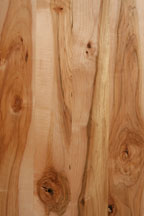
Description
The sapwood is creamy white with a slight reddish brown tinge and
the heartwood varies from light to dark reddish brown. The amount
of darker brown heartwood can vary significantly according to
growing region. Both sapwood and heartwood can contain pith fleck.
The wood has a close fine, uniform texture and is generally
straight-grained, but it can also occur as "curly," "fiddleback,"
and "birds-eye" figure.
Where it Grows
Eastern U.S., principally Mid-Atlantic and Lake states. A cold
weather tree favoring a more northerly climate, its average height
is 130 feet.
Main Uses
Flooring, furniture, paneling, ballroom and gymnasium floors,
kitchen cabinets, worktops, table tops, butchers blocks, toys,
kitchenware and millwork: stairs, handrails, mouldings, and
doors.
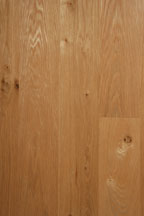
Description
The sapwood is light-colored and the heartwood is light to dark
brown. White oak is mostly straight-grained with a medium to coarse
texture, with longer rays than red oak. White oak therefore has
more figure.
Where it Grows
Widespread throughout the Eastern U.S. The white oak group
comprises many species, of which about eight are commercial. The
trees prefer rich well drained soil, and average height is 60 to 80
feet.
Main Uses
Furniture, flooring, architectural millwork, mouldings, doors,
kitchen cabinets, paneling, barrel staves (tight cooperage) and
caskets.
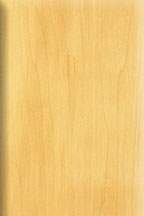
Description
The sapwood of basswood is usually quite large and creamy white in
color, merging into the heartwood which is pale to reddish brown,
sometimes with darker streaks. The wood has a fine uniform texture
and indistinct grain that is straight.
Where it Grows
Principally the Northern and Lake states. Average tree height is 65
feet.
Main Uses
Carvings, turnings, furniture, pattern-making, mouldings, millwork
and musical instruments. An important specialized use is Venetian
blinds and shutters.
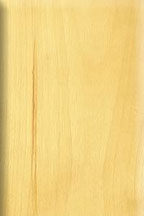
Description
Sapwood of Aspen is white, blending into the light brown heartwood.
The contrast between sap and heartwood is small. The wood has a
fine uniform texture and is straight-grained.
Where it Grows
Commercially in the
Northeast. Average tree height is 40 to 60 feet. The aspen has a
short life span: just before reaching full growth, it has a
tendency to suffer from decay. Aspens are known for seeding and
thriving in places where fires have been.
Main Uses
Furniture parts (drawer sides),
doors, mouldings, picture frames, millwork, toys, kitchen utensils,
food containers, baskets and matchsticks. Important specialized
uses include sauna laths because of its low conductivity of heat,
and chopsticks.
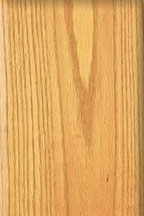
General Description
The sapwood of red oak is white to light brown and the heartwood is
a pinkish reddish brown. The wood is similar in general appearance
to white oak, but with a slightly less pronounced figure due to the
smaller rays. The wood is mostly straight-grained, with a coarse
texture.
Where it Grows
Widespread throughout Eastern U.S. The oaks are by far the most
abundant species group growing in the Eastern hardwood forests. Red
oaks grow more abundantly than the white oaks. The red oak group
comprises many species, of which about eight are commercial.
Average tree height is 60 to 80 feet.
Main Uses
Furniture, flooring, architectural millwork and mouldings, doors,
kitchen cabinets, paneling and caskets.